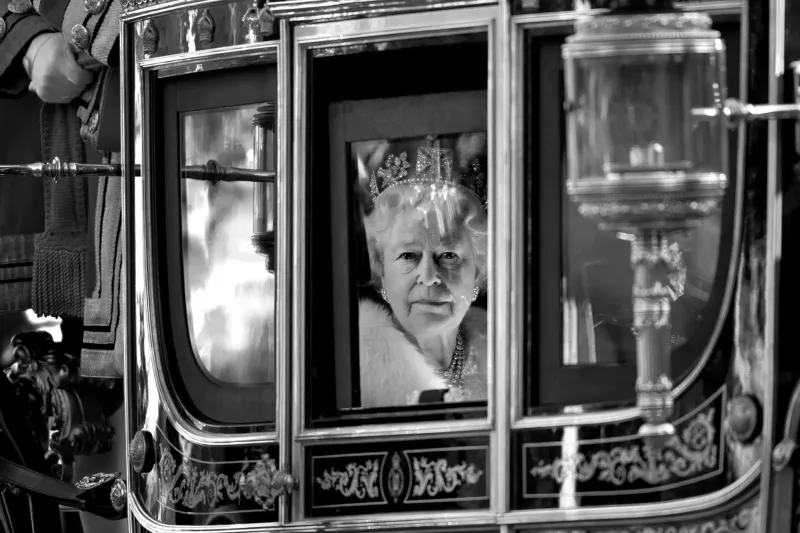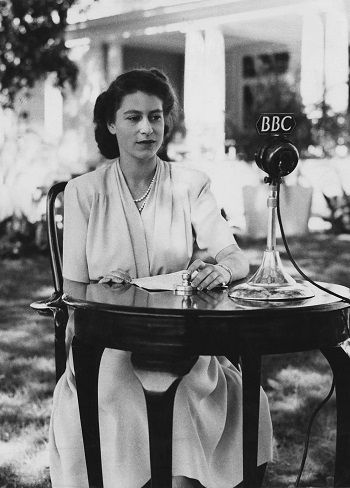
“Her Majesty’s a pretty nice girl / But she doesn’t have a lot to say,” sang the Beatle Paul McCartney in a playful ditty tucked into the 1969 album “Abbey Road.” The lyrics come to mind whenever Queen Elizabeth is back in the news, which has been happening often in recent years, what with the Netflix series “The Crown,” the death of her husband, Prince Philip, and the headline-hugging misadventures of her royal progeny.
The latest news, however — that the queen had entered a hospital “for some preliminary investigations” — raised a different level of emotion and anxiety, not fully relieved by the reassuring addendum that she “remains in good spirits.” Even at 95, with 69 years on the throne, Queen Elizabeth is not someone who takes a sick day lightly.
In an era when old age and hereditary privilege are largely out of vogue, Queen Elizabeth is still held in lofty regard, as her consistently high popularity ratings testify. No other head of state has succeeded in melding the ancient rites of hereditary monarchy with democratic rule as she has.
There may be a dozen monarchies extant in Europe and about 27 countries with royal families around the world, but beyond their realms, few people are even aware that Norway has a king (Harald V) or can name the ruler of Thailand (Maha Vajiralongkorn Bodindradebayavarangkun), much less take seriously the “Romanov royal wedding” staged recently in St. Petersburg. When Queen Elizabeth dies, it’s doubtful that Prince Charles or Prince William, the next two in line to sit on the British throne, will ever fill her royal slippers. She may be the world’s last global monarch.
Though she might well “have a lot to say,” given what she’s witnessed, heard and endured, she has largely kept it to herself. For all the countless speeches she has made and the volumes of banquet banter she has exchanged with an endless parade of rulers, politicians, celebrities and subjects, including five popes and 13 of the past 14 presidents (the missing president is Lyndon B. Johnson), she has never given an interview to a reporter. Among the very few revealing utterances she has let slip was the celebrated reference to 1992, a year in which three royal marriages fell apart and fire gutted a hundred rooms in Windsor Castle, as her “annus horribilis.” And that was in Latin.
More usually, her own speeches — as distinguished from the scripted Queen’s Speech she reads at the annual opening of Parliament — have been bracing invocations of duty, courage and other chivalric virtues. In one of her first major addresses, made in Cape Town, South Africa, on her 21st birthday, on April 21, 1947, as heir to the crown, she invoked the “noble motto” embraced by preceding heirs when they came of age: “I serve.”
“I should like to make that dedication now,” she continued. “It is very simple. I declare before you all that my whole life, whether it be long or short, shall be devoted to your service and the service of our great imperial family to which we all belong.”
In hindsight, the history of that service may no longer appear quite so noble. Seven decades ago, South Africa was ruled exclusively by whites, and many countries had yet to gain independence from the British Empire. The inherent racism of Britain’s colonial past has come under new scrutiny through the accusations made by Meghan Markle and Prince Harry.
Yet Queen Elizabeth has remained true to the “very simple” vow she made as a 21-year-old princess. Decade after decade, while her images on the currencies of the many Commonwealth realms in which she is still the constitutional head of state have changed to reflect a maturing queen, she continued to faithfully carry out her many royal duties, which often included long voyages. In the process, she has become the longest-lived and longest-reigning British monarch, and if she is still on the throne on May 27, 2024, she will surpass Louis XIV of France, as the longest-reigning European monarch ever. (He got the job at age 4.)
That is the only point of comparison between Elizabeth II and the flamboyant Sun King, who took care to have his absolute rule glorified in lavish paintings and palaces. Reserve, simplicity and obedience to constitutional constraints have been intrinsic to Queen Elizabeth’s reign, making for a tableau that writers, artists, directors, tabloids, haberdashers and the public have filled with whatever colors, emotions and details they deem fit.
The Queen Elizabeths of Helen Mirren, Claire Foy and Olivia Colman, three of the actresses who have portrayed her, are very different, though each is a plausible interpretation of the known facts of her life. The queen’s communications secretary, Donal McCabe, made a point of noting that the royal palace was not “complicit in interpretations” made in “The Crown.”

Ms. Colman, who played the queen in that series, saw in her an “ultimate feminist.” “She’s the breadwinner. She’s the one on our coins and bank notes. Prince Philip has to walk behind her. She fixed cars in the Second World War. She insisted on driving a king who came from a country where women weren’t allowed to drive” — that was Crown Prince Abdullah of Saudi Arabia at Balmoral Castle in Scotland in 2003, when he implored the queen to drive slower.
In her Christmas broadcast in 1966, the queen explicitly addressed the constraints women confront around the world. “In spite of these disabilities, it has been women who have breathed gentleness and care into the harsh progress of mankind,” she said.
Comments like that and shows like “The Crown” may give people a sense that they know Queen Elizabeth. Yet it is a measure of her mystique that no one knows for sure whether she has seen any of the movies or television series about her. Nor, for all the crises she has faced, from the death of Princess Diana to Prince Andrew’s friendship with the convicted sex offender Jeffrey Epstein, is it really known how those have affected her. Perhaps that’s what Mr. McCartney meant with the line “Her Majesty’s a pretty nice girl / But she changes from day to day.”
The paradox is that throughout all the changes — the scandals, Britain’s hesitant entry into the European Union, the country’s wrenching exit from it and all the other turmoil in the world — and despite the fact that we really know so little about her, the image of the sturdy, politely smiling little queen in pastel-colored coats and matching hats, at times accompanied by an equally sturdy little Welsh corgi, has become a reassuring constant over the decades. There are not many.
Serge Schmemann joined The Times in 1980 and worked as the bureau chief in Moscow, Bonn, and Jerusalem and at the United Nations. He was editorial page editor of The International Herald Tribune in Paris from 2003 to 2013.
